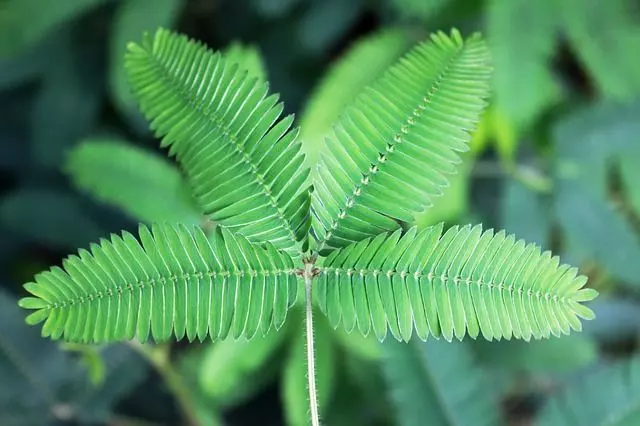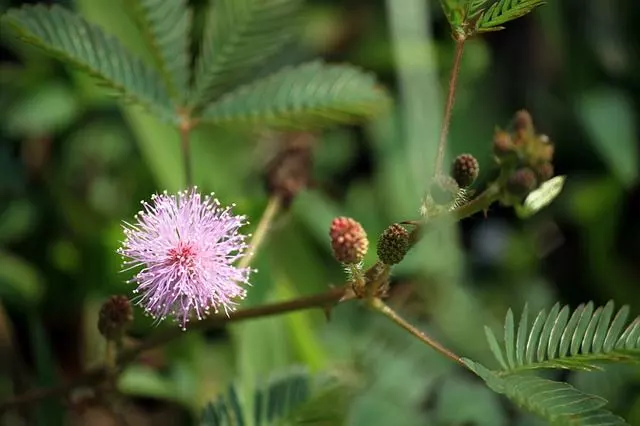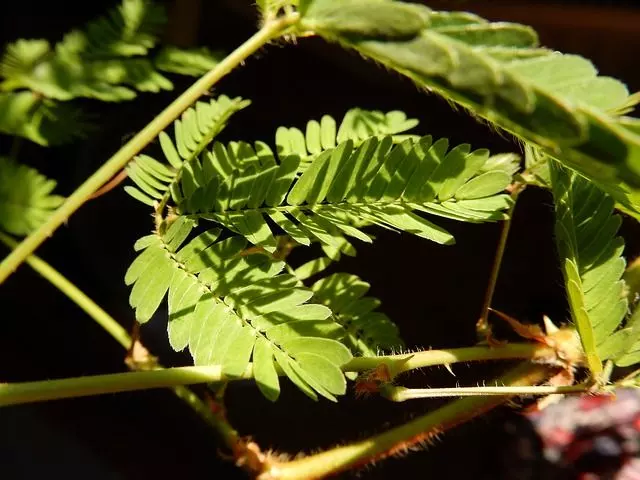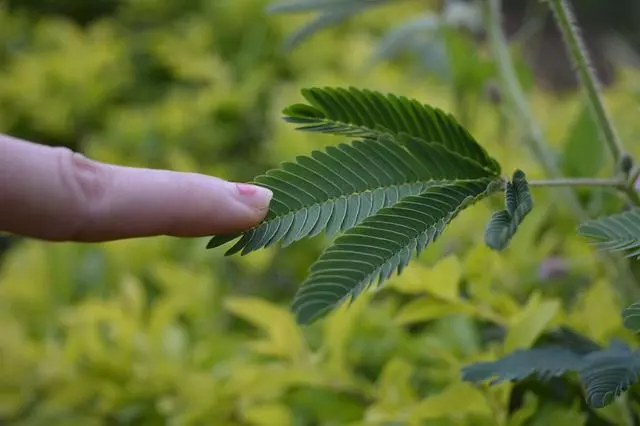The world of plants and vegetables is full of curiosities. One of them that we may have seen in many videos but did not know its name is Mimosa pudica, commonly known as “sleepy plant” or “sensitive plant”. Learn all about how to care for mimosa pudica in this guide.
The curiosity of this name is due to the fact that it has a reflex effect by which when it detects that something touches its leaves it retracts and hides them. This reaction to touch is the sum of complex movements and evolutionary reactions to avoid possible predators.
In this guide, we are going to comment on the main characteristics of the plant, as well as the main cares if we have the possibility of taking care of it, for being able to adapt it to our climatology, in our orchard or garden.
Table of Contents
Characteristics of Mimosa pudica Plant
The plant Mimosa pudica or sensitive mimosa is considered a herbaceous species, which reaches an average size of about 20″ (50 cm) in height. It is an evergreen species, which means that it does not lose its leaves at any time of the year.
Its origin is established in the tropical rainforests of the African and American continent since it needs high humidity and a high rainfall regime.
The sensitive mimosa belongs to the Fabaceae family (Fabaceae), a very extensive classification that includes leguminous plants that produce synergies with microorganisms to capture nitrogen (such as beans, soybeans, peas, etc.).
As an ornamental plant it is also interesting, since it produces a great vegetative development and, in the warm summer months, the pinkish, circular and quite showy flowers appear.
Taxonomy
Order: Fabales
Family: Fabaceae
Genus: Mimosa
Species: Mimosa pudica
Known common names: shame plant, sensitive mimosa, nometoques, moriviví, dormidera, poppy.

How to Care for Mimosa Pudica
Although Mimosa pudica is not a plant that is highly valued for its ornamental properties, it can be grown in areas with subtropical climates, with high relative humidity and warm temperatures almost all year round.
Mimosa pudica Care: Temperature
One of the most special conditions for the cultivation of the sensitive mimosa is the temperature since it needs to maintain a warm range almost all year round. This is why it is considered a tropical rainforest species.
For this, it needs to be cultivated in an area where the average temperature never drops below 50°F (10 ºC). In no case tolerates frost and can lose leaves and stems with intense cold.
It is usually grown in humid areas, with an RH above 70% on average, hence it is also necessary for environments with high rainfall throughout the year. It is a shade species, although it can be planted in a semi-shaded environment, with sun exposure of a few hours a day.
Mimosa pudica Soil
The jungle species and of great vegetative development, characteristic of leguminous plants, usually require fertile soils, with good levels of organic matter and sufficient retention of humidity (but never waterlogging).
We will need a soil with a clayey part, a minimum of 2% organic matter and good moisture retention.
If it is grown in pots, we need one with sufficient volume to ensure the development of its roots, which are usually quite deep.

Mimosa pudica Care: Watering
The watering of Mimosa pudica should be generous and abundant, but always guaranteeing correct drainage of the soil or pot.
In the warmer months, we can water an average of 3 times per week.
Fertilizing
The mimosa sensitive is not usually fertilized, since it is capable of using all the nutrients that a fertile soil with a sufficient level of organic matter provides.
Nitrogen supply should not be neglected, especially when temperatures rise and new buds, stems and new leaves appear.
Propagation Mimosa pudica
This species can be multiplied by seeds or cuttings. If we do it by seeds, a slower process but more interesting from the botanical point of view, we can extract the seeds after flowering (after summer).
These seeds are usually planted at the end of winter, about 1 month before the beginning of spring. To extract the seeds, it is necessary to wait until the pod dries and acquires a dark brown shade, it will mean that the seeds are ready to be harvested.

Why Mimosa Plant Close When Touched
One of the most striking things about the Mimosa pudica plant is its ability to produce a rapid movement of its leaves when it senses that something has touched them. A reflex movement similar to that of carnivorous plants when they detect pressure.
Its leaves are quite special and somewhat different from the concept we have of a leaf. It is composed of many leaflets, hence the movement they produce when they feel touch is much more striking.
In the same way, this contraction is also done voluntarily depending on the environmental humidity, as a means to protect itself from evapotranspiration.
At a technical level, this movement and change of position of the leaflets in Mimosa pudica is known as nyctinastia, and is done according to light stimuli or external weather changes.
The rapid movement is caused by turgor changes at the cellular level at the base of the leaflet, as a kind of water-filled bearings that, by osmosis, produce the change of angle of the leaves.
The main causes that provoke this sudden change of the leaves are the following:
Presence of herbivores: when any part of the animal touches the leaf, it quickly retracts and exposes much less plant mass, so it ceases to be so attractive to the herbivore, and it may turn to other plants that are juicier and more substantial.
Climatic adaptation: depending on the presence of light, changes in temperature or humidity, it produces changes in exposure to the environment. In this way, it can control energy savings and water loss (evapotranspiration). At night, for example, they remain closed, since they do not photosynthesize and do not need to expose as much of their leaflets as possible.

